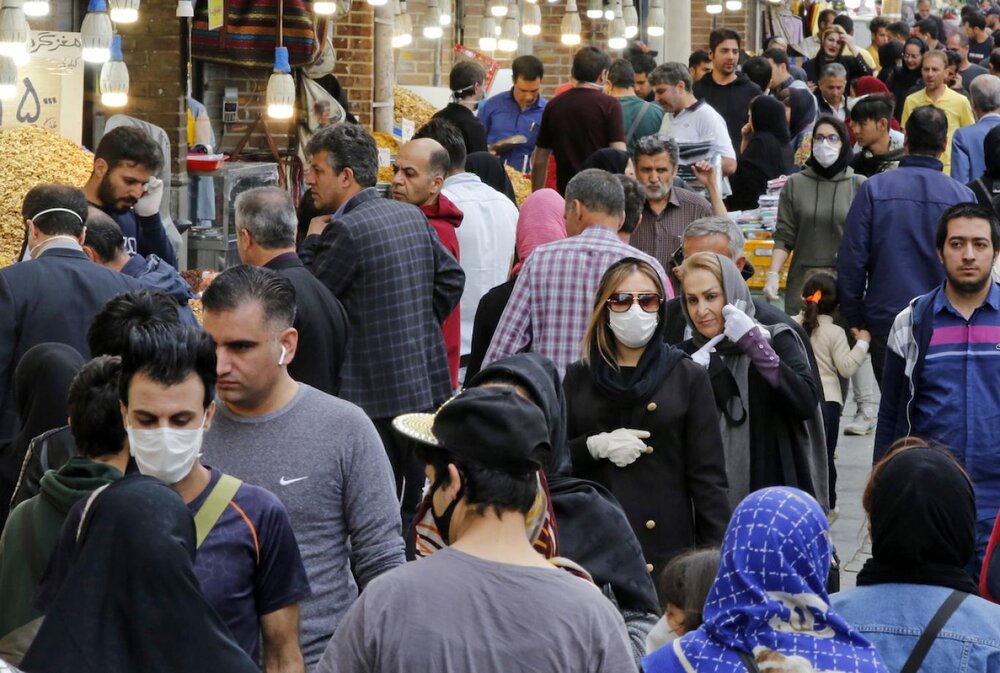Negative population growth rate stalls

TEHRAN –The downward trend of Iran’s population growth stopped for the first time in the past [Iranian calendar] year (March 2021-March 2022), Hesamoddin Allameh, the secretariat of the National Council of the Elderly, has said.
It was predicted that population growth would stop in 2052 and declines to a negative rate, but if the current trend continues for the next 10 years, the population growth rate may not stop, he noted.
Iran’s population increased by 569,963 in the past year, and the natural population growth rate was estimated at 0.7 percent, according to the National Organization for Civil Registration.
Over the past year, 1,106,072 infants were born in the country and 536,109 people died, so the country’s population increased by 569,963.
The birth rate has accelerated over the past few months, which seems to be influenced by incentive policies and benefits provided to increase childbearing. The highest population rate in Iran was recorded in 1986 amounting to about 3.6 percent. The population rate has been declining over the past 35 years until it reached 0.7 percent, but last year it was equal to the previous year [showing no reduction], he further explained.
According to statistics published by the Statistical Center of Iran, the total number of births registered in the [Iranian calendar] year 1399 (March 2020-March 2021) was 1,114,155, while a year before that, some 1,196,132 infants were born.
By 2046, the population of 15-to-65-year-olds is more than two-thirds of the total population, but the demographic window may close a few years earlier, he also said.
The demographic window may close for two reasons. The first is due to increasing life expectancy and the aging population, and the second is that if population incentive policies work, it will take 15 years for the newborns to reach working age, so the demographic window may close sooner, but instead if population policies are successful, the productive population will remain high after a 15-year period.
According to Allameh, at present, the total population of the country is equal to 84.9 million.
The birth rate has accelerated over the past few months, which seems to be influenced by incentive policies and benefits provided to increase childbearing.
In line with the "Law on Family and Youth Support", Iran has introduced several plans, including the facilitation of housing, low-interest loans, and longer maternity leave.
By a decree issued by President Ebrahim Raisi, the "Law on Family and Youth Support" approved by the Majlis (Iranian Parliament) was notified to the Ministry of Health and the Vice Presidency for Women and Family Affairs.
The Guardian Council approved the law on November 17 last year to implement a population growth and family support plan for 7 years to change the declining trend of childbearing.
The plan stipulates health insurance for infertile couples, providing services and facilities to working women, providing health and nutrition support packages to mothers and children, educational opportunities for student mothers, providing livelihood support to families, and ongoing medical services to pregnant women.
The national budget bill for the current [Iranian calendar] calendar year, which began on March 21, has proposed 120 trillion rials (nearly $480 million) to implement childbearing and family support plans in the country.
Demographic issue
Today, the country's fertility rate has reached about 1.6 children per woman, however, it was 6.5 children per woman, in 1986. The lowest fertility rate in the whole region of West Asia, North Africa, and the MENA region is recorded for Iran.
While 1,594,000 births were registered in the [Iranian calendar] year 1394 (March 2015-March 2016), the downward trend continued annually to the point that the number of births reached about one million in the [Iranian calendar] year 1399 (March 2020-March 2021).
In other words, the country lost more than 550,000 births in five years.
The fertility rate declined to 1.71 children in the past [Iranian calendar] year (March 2020-March 2021), reaching below the replacement level, according to the report released by the Statistical Center of Iran.
Replacement level is the amount of fertility needed to keep the population the same from generation to generation. It refers to the total fertility rate that will result in a stable population without it increasing or decreasing.
Nicholas Eberstadt, the Henry Wendt Chair in Political Economy at the American Enterprise Institute (AEI), wrote in an article in July 2020 that the fertility rate in Iran has dropped by 70 percent over the past 30 years, which has been the highest decline in human history.
Seyed Hamed Barakati, deputy health minister for family and school population, said in May 2021 that Iran’s population growth rate has decreased to less than one percent for the first time over the past four decades.
FB/MG
Leave a Comment